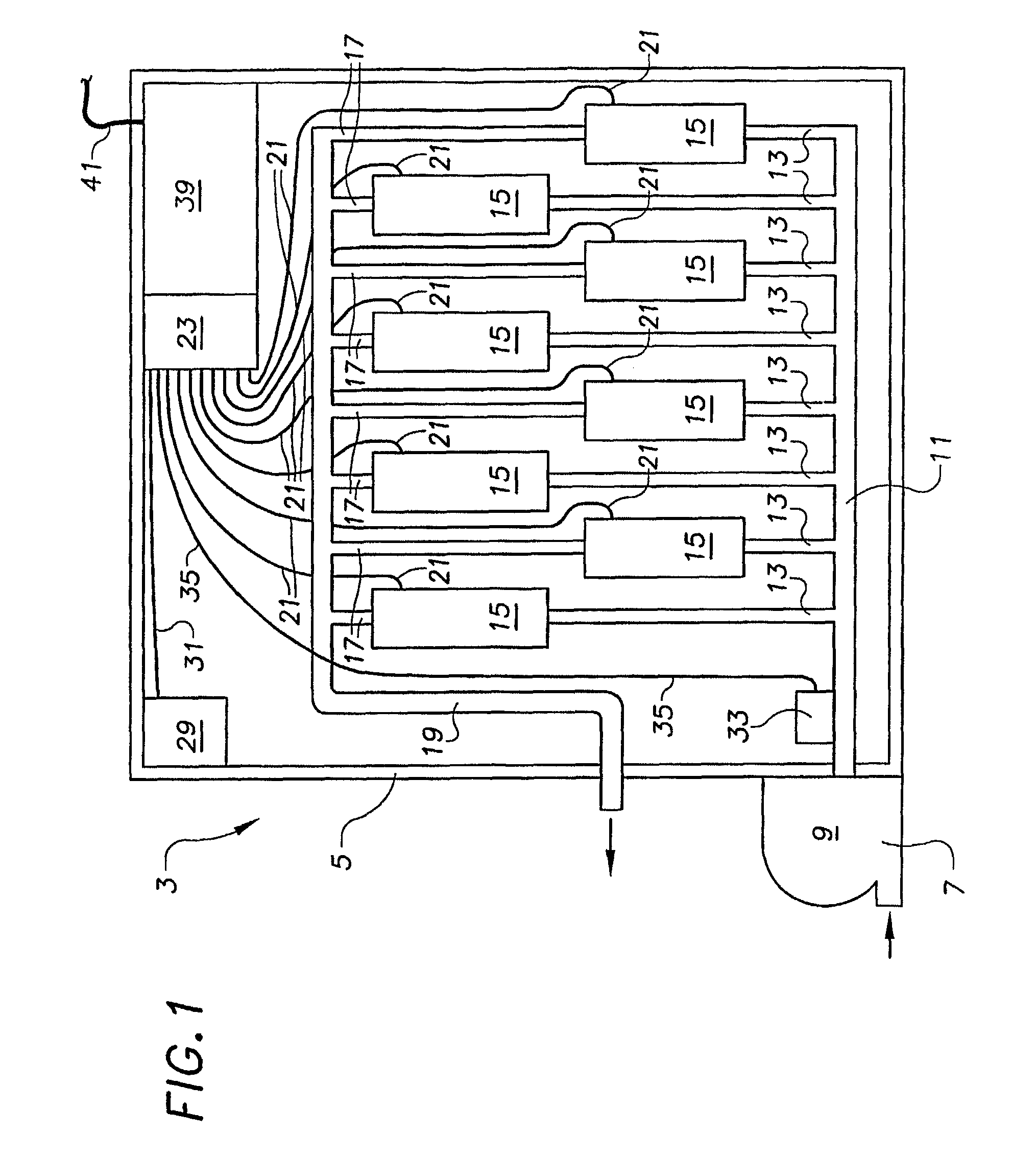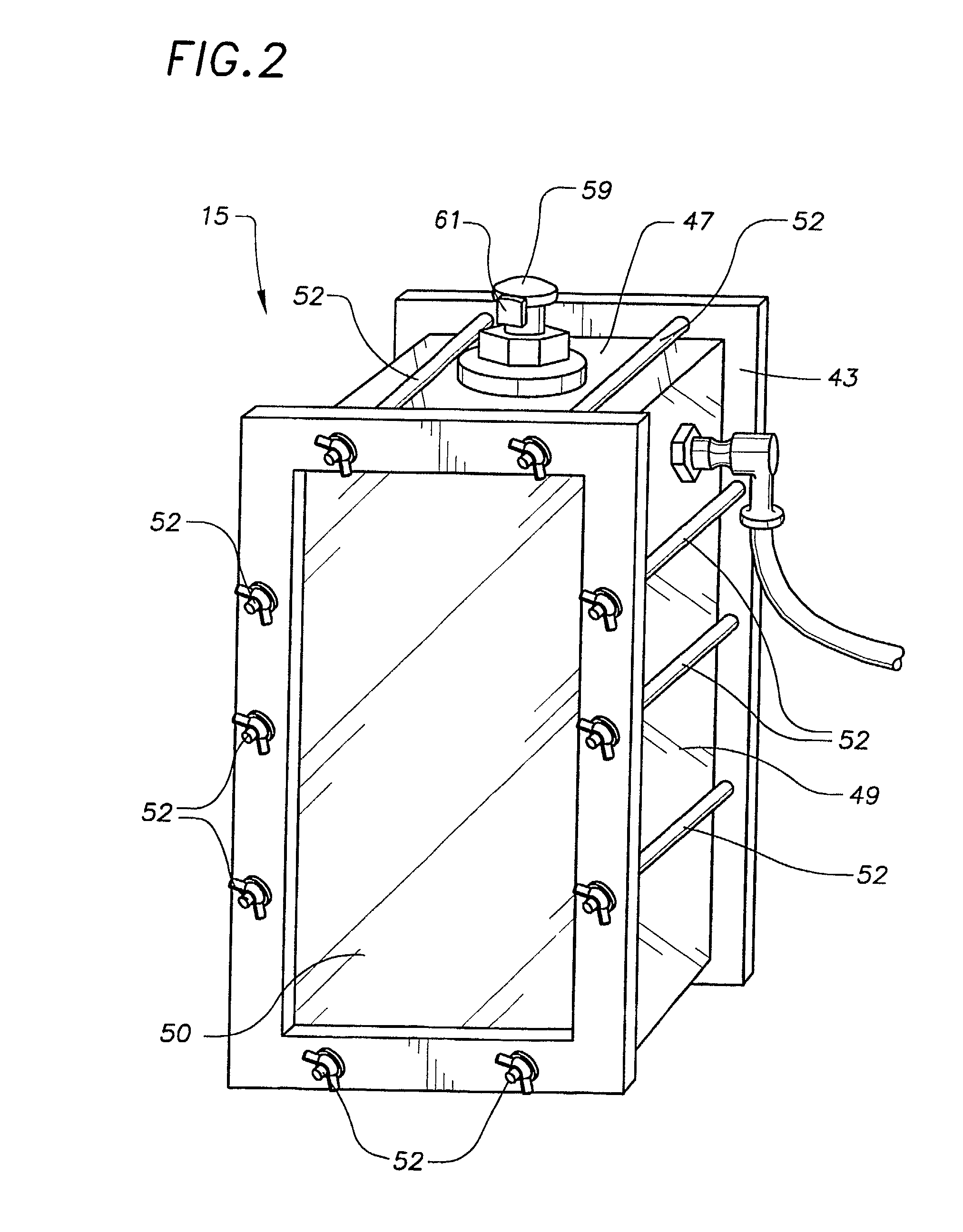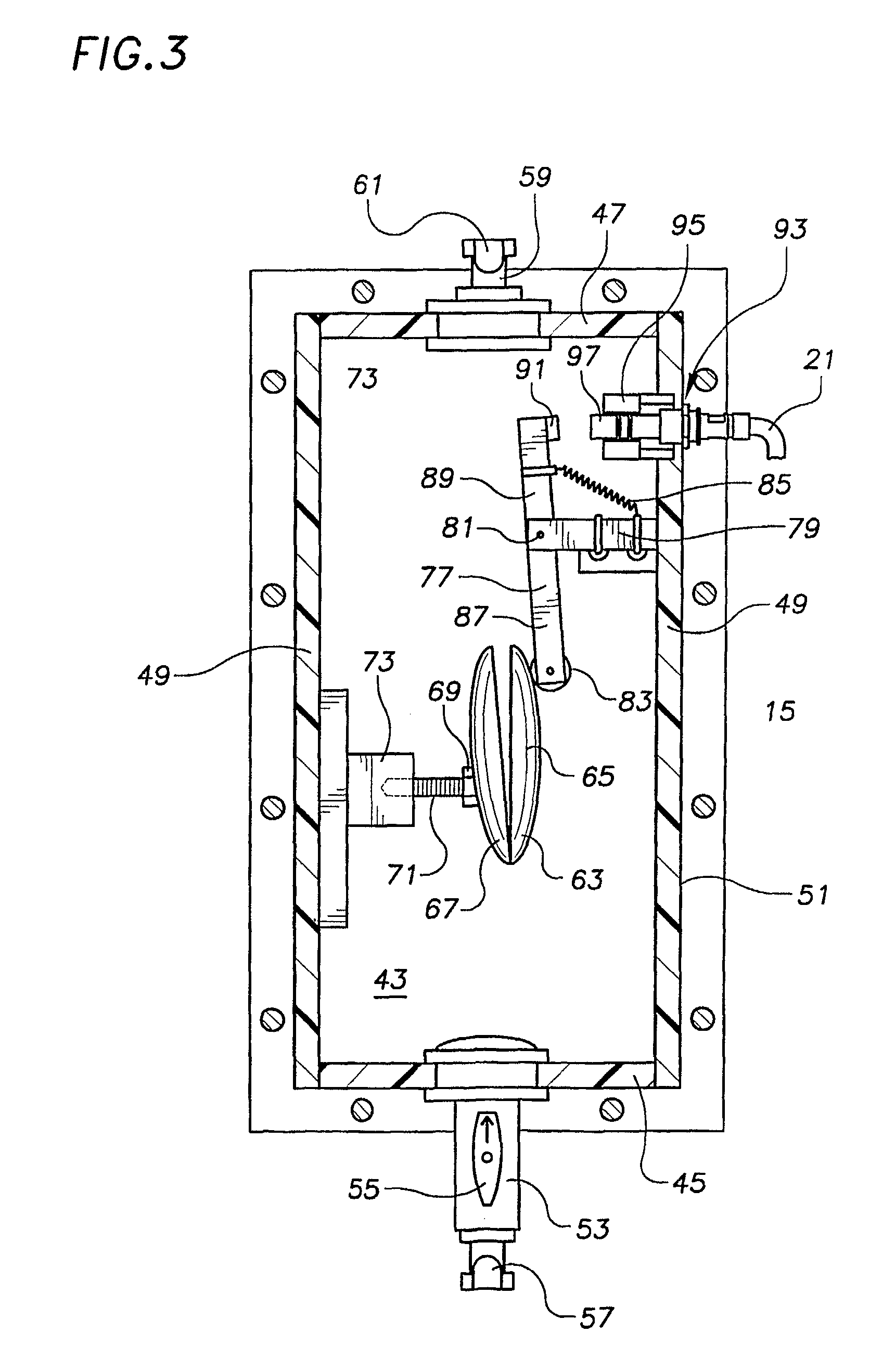Water monitoring system using bivalve mollusks
a water monitoring system and bivalve technology, applied in the field of monitoring water quality, can solve the problems of high maintenance cost, unsuitable long-term unattended operation, and inconvenient installation or removal of mollusks, and achieve the effect of convenient calibration of the position of the sensor, high degree of accuracy, and easy installation or removal
- Summary
- Abstract
- Description
- Claims
- Application Information
AI Technical Summary
Benefits of technology
Problems solved by technology
Method used
Image
Examples
example 1
[0085]In a basic method for toxicant detection, DOA is calculated continuously using the formula
DOA=(V·|R|) / M
wherein V is the mean variance in gape over a recent period of time, preferably 30 seconds, R is the mean regression of the gape over the period (regression herein meaning the slope of the best-fit line through the data values of the time period). M may be the traveling mean as defined above, or may be the mean gape taken over another longer period, preferably about one hour.
[0086]An implementation of this method is shown by the graphs of FIGS. 7 to 10. Water being screened by a system as described previously was loaded with sulphuric acid, resulting in a drop in pH as shown in the graph of FIG. 7.
[0087]The average percentage gape of the mollusks exposed to the water is shown in FIG. 8, wherein it can be seen that just prior to the 200 minutes mark, mollusks began to reduce their gape, dropping the gape to less than about 10% of the normal maximum shortly after 200 minutes.
[...
example 2
[0089]The variance value may also be used to select which method or function is to be used to interpret the mollusk data and calculate DOA. In such a system, the variance is calculated and compared with a pre-selected threshold value.
[0090]When the variance is below this threshold value, a first, less sensitive function of the gape data values is used to calculate the DOA value. Such a function might be a linear calculation such as
DOA=(1−Gi)*10
which would yield a DOA value between 0 and 10, with 10 corresponding to the mollusk completely closing its shell and strongly indicating presence of toxicant. Also, particularly preferred for such functions are Logistic or Gaussian (or sigmoid) functions as illustrated in FIG. 11, which may be modified to keep DOA values in range, and also to provide sensitivity in specific sub-ranges.
[0091]As shown in FIG. 11, both the Logistic function A and the Gaussian function B have a central region in the area of 50% gape wherein a change in gape has a...
example 3
[0094]An implementation of such a DOA method using a Logistic calculation, with a variance factor added for variances over 50, is illustrated by the graphs of FIGS. 12 to 16. As seen in FIG. 12, water being screened was loaded with a gradually increasing concentration of chloride (as aqueous NaCl). The raw gape data shown in FIG. 13 exhibited decreasing gape over time to less than 40% of normal maximum gape. This data was smoothed, as seen in FIG. 14, by calculation of the traveling mean over the set of stack values.
[0095]As best seen in FIG. 15, variance of the gape values indicates substantial mollusk activity between 0.5 and 1.0 hours. This resulted in a DOA output as seen in FIG. 16, already yielding a DOA greater than 5 at 0.5 hours, while chloride concentration was still relatively low.
PUM
| Property | Measurement | Unit |
|---|---|---|
| frequency | aaaaa | aaaaa |
| output voltage | aaaaa | aaaaa |
| output voltage | aaaaa | aaaaa |
Abstract
Description
Claims
Application Information
 Login to View More
Login to View More - R&D
- Intellectual Property
- Life Sciences
- Materials
- Tech Scout
- Unparalleled Data Quality
- Higher Quality Content
- 60% Fewer Hallucinations
Browse by: Latest US Patents, China's latest patents, Technical Efficacy Thesaurus, Application Domain, Technology Topic, Popular Technical Reports.
© 2025 PatSnap. All rights reserved.Legal|Privacy policy|Modern Slavery Act Transparency Statement|Sitemap|About US| Contact US: help@patsnap.com



